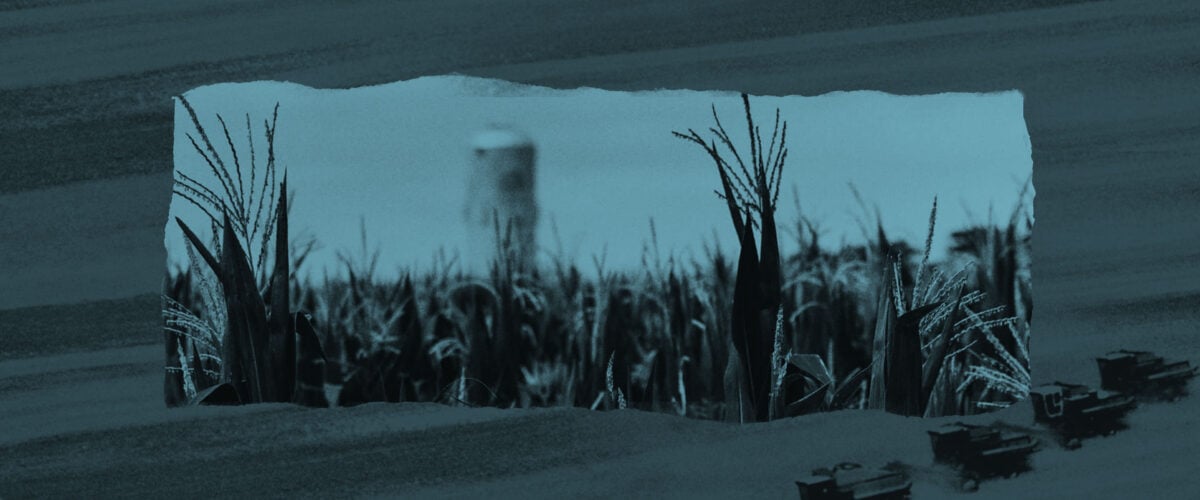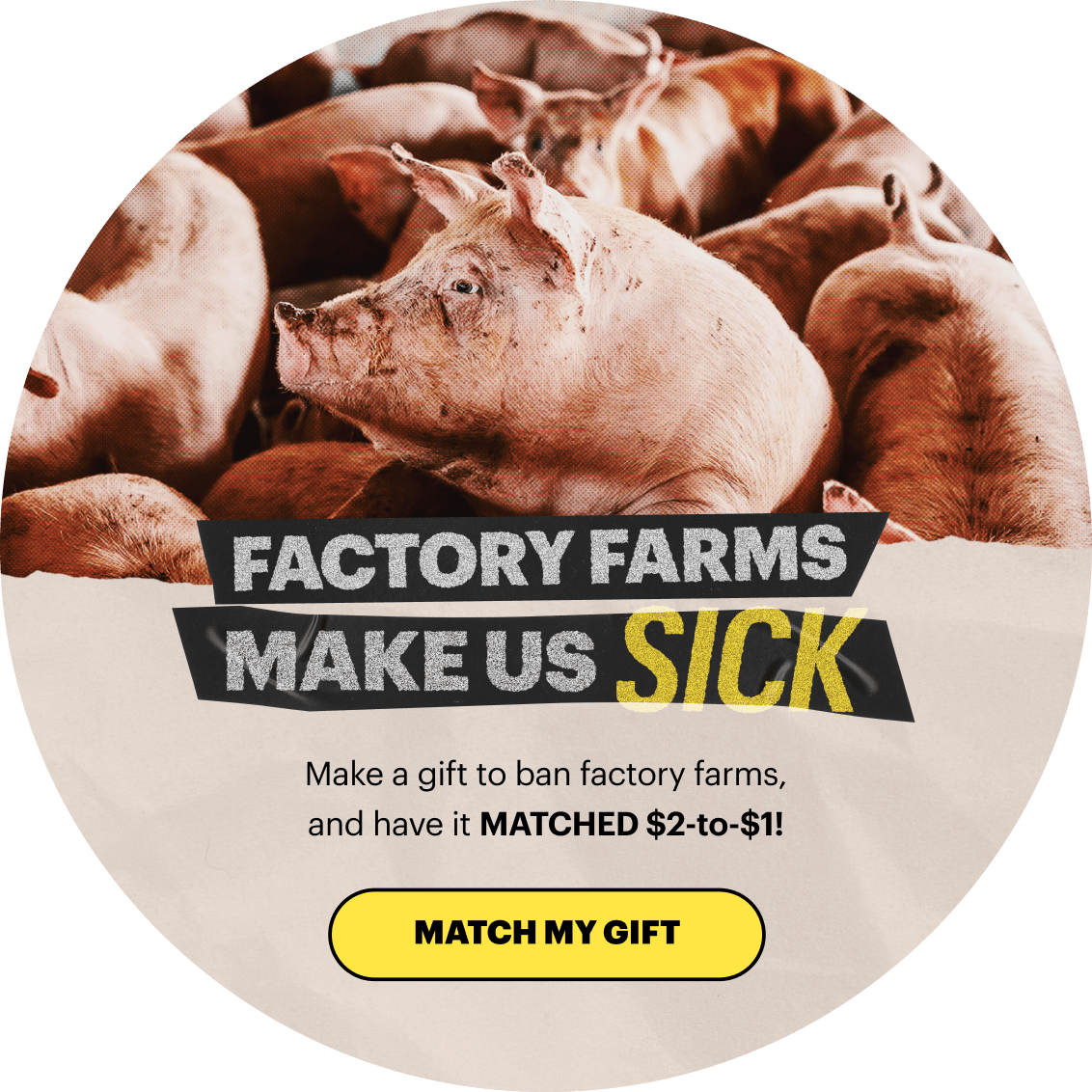How Ethanol Worsens the Worst Parts of Our Food System
Published Apr 17, 2023

Corn ethanol entrenches polluting factory farms and worsens our food system. We've got to end government support for this fuel.
Right now, a three-headed monster is growing in our food system. In recent years, we’ve seen the expansion of the corn ethanol industry, monocrop farming, and confined animal feeding operations (CAFOs, or factory farms). The industries have proved mutually reinforcing; growth in one has fueled growth in the others.
This three-headed monster didn’t appear out of nowhere — it was born out of government subsidies for corn ethanol. Policies have supported ethanol as a “green” fuel — but it’s far from sustainable. Not only does it fail to live up to its climate claims; it props up harmful monoculture practices and the polluting factory farm industry.
If current trends continue, we face more monocropping, more CAFOs, and more livestock. To make matters worse, this year the Environmental Protection Agency is set to expand support for ethanol even further.
We can’t let that happen. To stop factory farms and create a more just and planet-friendly food system, we need to tackle the ethanol industry.
Bad Policy Grew Ethanol and Agribusiness
Over the decades, American farming has transformed from family farms raising multiple crops and livestock to large, industrial farms that grow one crop or have tens of thousands of livestock.
Ethanol has driven much of this growth, thanks to the national Renewable Fuel Standard (RFS). This program came out of the Energy Policy Act of 2005 — coincidently, the same law that led to the fracking boom.
The RFS requires domestic oil refiners to mix 15 billion gallons of corn ethanol into the nation’s gasoline every year. As a result, farmers planted an additional 6.9 million acres of corn annually from 2008 to 2016.
So What’s the Problem With All This Corn?
There are many ways to turn organic material into fuel, but turning corn into ethanol is the least sustainable. That’s because it supports and is supported by monocropping and factory farms. Nevertheless, U.S. policy pushes ethanol, and about 95% of it comes from corn.
Ethanol production now consumes about 45% of all U.S. corn, while 40% goes to animal feed. Farmers grow all that corn with intensive monocropping, where a single crop is continually planted for at least three years in a row.
Monocropping is terrible for the environment. Among other problems, it degrades the soil and pollutes waterways with fertilizers and pesticides. Expanding ethanol production will just make these problems even worse.
Additionally, ethanol boosters have sold the fuel as a climate-friendly alternative to gasoline. But according to one study, ethanol is likely a quarter more carbon-intensive than gasoline.
In fact, the study found that corn ethanol “has failed to meet the [RFS’s] own greenhouse gas emissions targets and negatively affected water quality, the area of land used for conservation, and other ecosystem processes.”
But we know that ethanol’s environmental impact is even worse than this study suggests. It didn’t account for how ethanol demand drives the growth of factory farming, a notoriously polluting industry.
The Ethanol Industry Boosts Harmful Factory Farms
Factory farms threaten our environment and our communities in so many ways. They discharge vast amounts of pollutants, including carbon emissions, animal waste, and antibiotics. We have long-known that factory farms bring sickness and unlivable conditions to nearby communities.
Moreover, the factory farm industry has centralized and consolidated meat markets in the U.S. This wreaks havoc on rural economies and makes us more vulnerable to price gouging.
An expanding ethanol industry will only worsen the impacts of factory farming. That’s because ethanol plants produce a byproduct called distillers grain, used as feed for cattle and, to a lesser extent, pigs and poultry.
Growing ethanol companies could create a surplus of distillers grain. In that case, the factory farm industry would gladly step in to take that grain off their hands by expanding farms or building new ones.
This has already happened. At the beginning of the post-RFS ethanol boom, the trade organization Nebraska Cattlemen noted that Nebraska had enough livestock to consume the distillers grain already produced by the ethanol industry. The group reported that herds would have to quickly grow to absorb all the additional ethanol byproduct flooding the market.
At the same time, CAFOs can provide animal manure as fuel to power ethanol plants. These two industries have a symbiotic relationship that will justify and drive the growth of even bigger factory farms.
The result: an even more industrialized and concentrated agricultural sector.
We Have to Rein in the Ethanol Industry
So far, U.S. policy has treated corn ethanol as a green fuel. In reality, ethanol is a climate polluter that drives the expansion of other polluters, like factory farms.
Unfortunately, in June 2022, the EPA announced the largest-ever ethanol blending requirement under the Renewable Fuel Standard. The agency also pledged to bolster the program for years to come. In fact, this May, it will likely increase RFS ethanol requirements again.
Along with industrialized monocropping and factory farming, the ethanol industry is a plague on our environment and our communities. We must cut and reverse the growth of this three-headed monster if we are to have a just and sustainable food system.
Tell the EPA to lower ethanol blending requirements!


FACTORY FARMS MAKE US SICK
Make a gift to ban factory farms ~and have it matched $2-to-$1!
Enjoyed this article?
Sign up for updates.
TO TOP


